SCIATIC-UGH! What Is It & How To Fix It
Quick question! What does a robo-caller and inflamed sciatic nerve have in common? Yup, you guessed it. They both can be a HUGE P.I.T.A.
Sadly, although this is true, the difference is that you don’t have to suffer from the latter on a daily basis. But(t) before we delve into the steps that you can take at home to alleviate this painful condition, it is important to understand the who, what and where of sciatica.
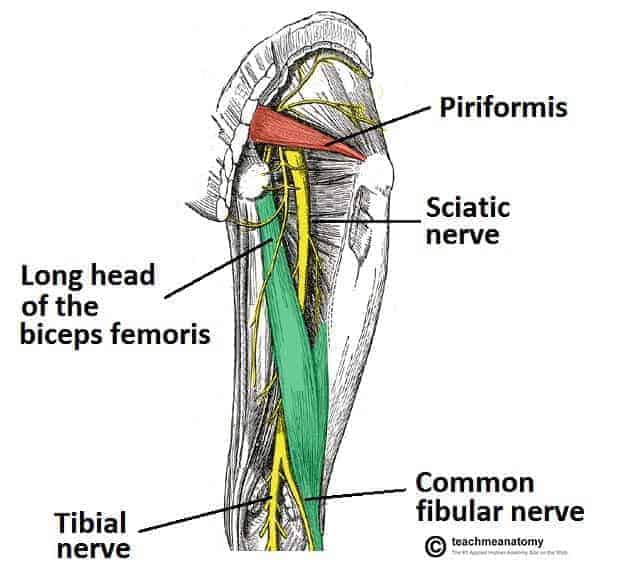
Sciatica, is an irritation of the sciatic nerve, which is the largest nerve in the body. The nerve itself courses along the backside and travels in a tunnel down the back of the thigh, behind the knee, calf, bottom of the foot and into the toes. When the nerve is agitated, one can experience pain and/or parasthesia in those areas. Most often it’s described as a deep pain starting in the buttock that may or may not be associated with low back pain.
Often times, it can be confused for a back injury due to the similar triggering mechanisms such as bending forward. What differentiates sciatica from a low back injury or more serious pathology are some of these symptoms:
- Loss of bowel and bladder control
- Night pain/sweats
- Unintentional weight loss
- Abnormal muscle weakness (inability to support body weight on toes or foot drop)
Use your best judgment and instinct to determine whether you have any or all of these. If you do, stop and get a professional opinion. If what you experience are mainly the hallmark symptoms of sciatica, then let’s proceed.
RESTORE TISSUE DYNAMICS AT THE HIP
If we were to peel away the layers of muscle and connective tissue that make up the back of the hip, the sciatic nerve sits deeper in relation to the glutes, hamstrings and adductors, which are the primary movers of the hip in every direction, except flexion. Most often, it’s not this superficial layer that is the cause of sciatica. It’s guarding or over tensioning of the deeper layer of fascia and muscles that rotate and assist in keeping the hip seated within the socket – the quadratus femoris, piriformis, gemellus superior, gemellus inferior and obturator internus, because all 4 of these muscles surround the sciatic nerve as it exits the sacrum.
So let’s begin by making the soft tissue around the backside less sensitive to graded pressure by way of Glute Smashing.
(The video archives and Pain Section at The Ready State have many more in-depth follow-along videos.)
To effectively seat the hip, we need to be able to access full motion of the hip into flexion, external rotation, and internal rotation. (You can find the normative standards for hip motion, in the Knee Pain and Squatting: A Troubleshooting Guide article).
To address these restrictions, some of our favorite mobilizations to help restore the dynamics of the hip are the Banded Hip Distraction and Banded Hip Floss.
BANDED HIP DISTRACTION
BANDED HIP FLOSS
BUTT WE CAN’T STOP THERE
It’s widely believed that sciatica resolves on its own within 6 weeks. How fluid and graceful our movement quality looks during that 6 weeks looks is anyone’s guess. There’s the likelihood that we will use different strategies (compensations) to solve our movement limitations that can create more tension throughout the system.
“An effective human being is a whole that is greater than the sum of its parts.”
– Ida Rolf
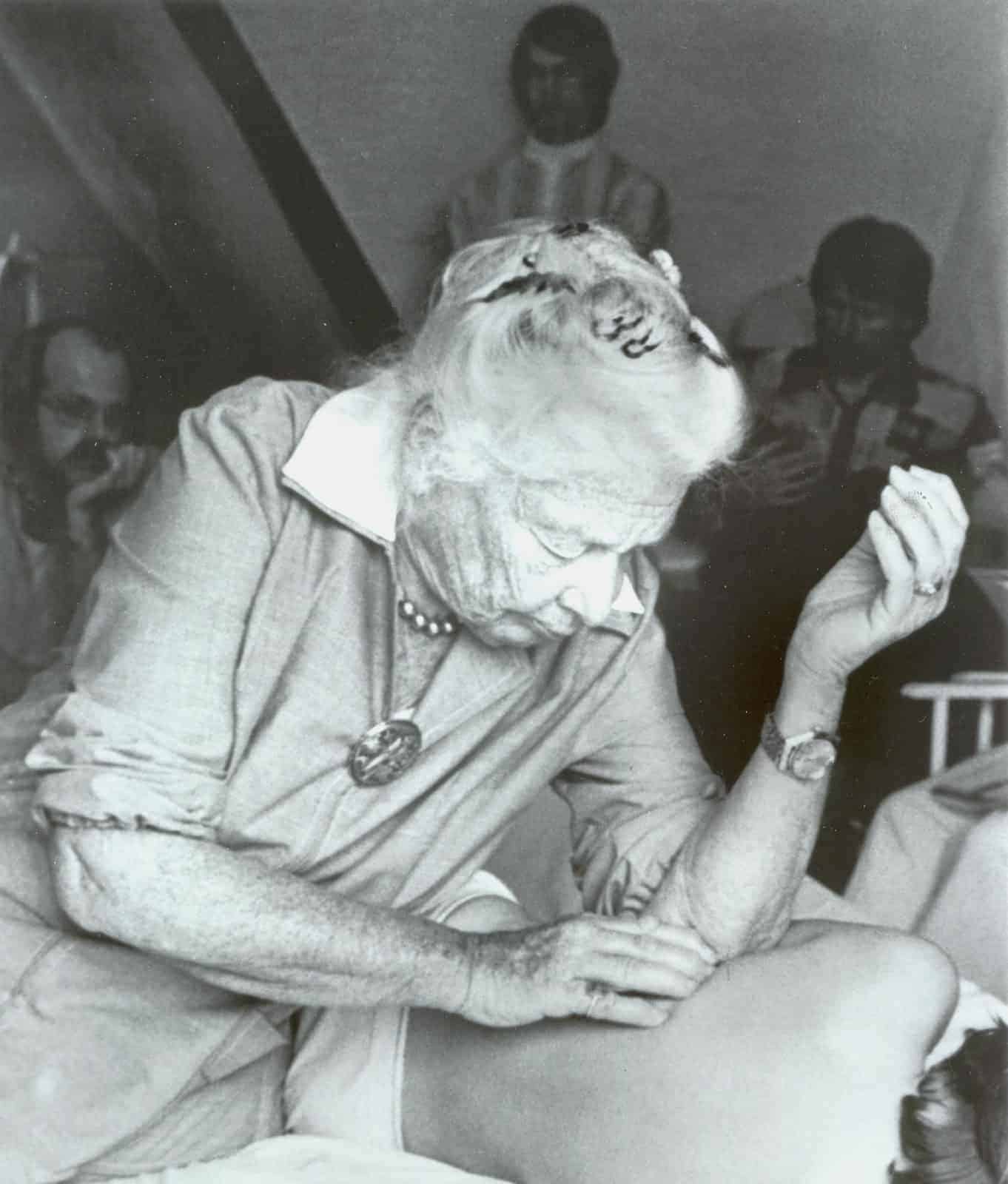
Just restoring what’s happening at the hip may help clear the initial hurdle. However, you and I are both smart enough to know that we can’t stop looking there. Like any meaningful relationship that we want to cultivate, grow and be long lasting, we have to look at the big picture. We have to look above and below the pain points of origin to see what other low hanging fruit is ripe for the picking.
RESTORE THE SUPERFICIAL BACK LINE
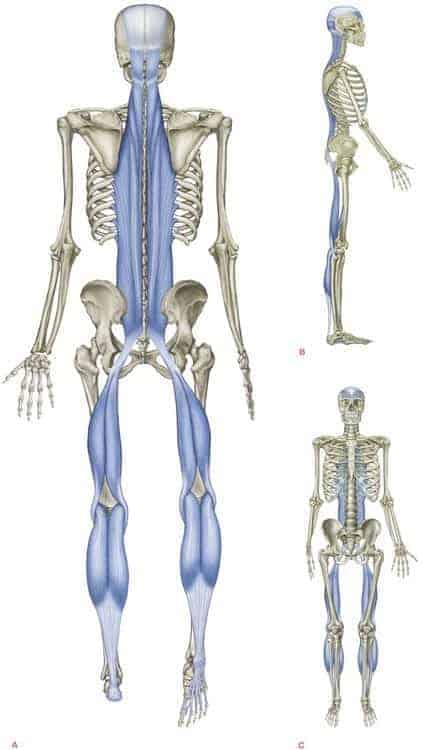
Restrictions in what Anatomy Trains author, Thomas Myers, refers to as the Superficial Back Line, are common restrictions seen in sciatica. When the system surrounding these structures gets stiff, not only does it affect how well the hip itself moves. It affects our tolerance and ability to globally flex. This includes the soft tissues from head to toe. Text neckers or high heel wearers out there, I’m looking at you. Creating slack within the system above and below is essential to maintaining movement robustness into global flexion.
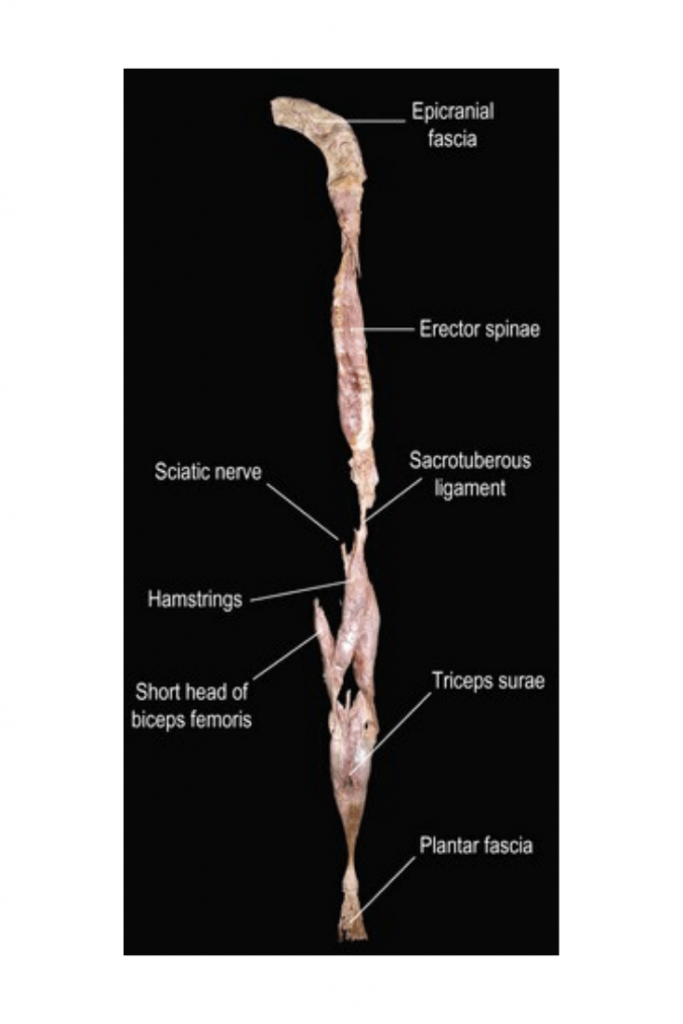
RE-CLAIM YOUR ASS-ETS
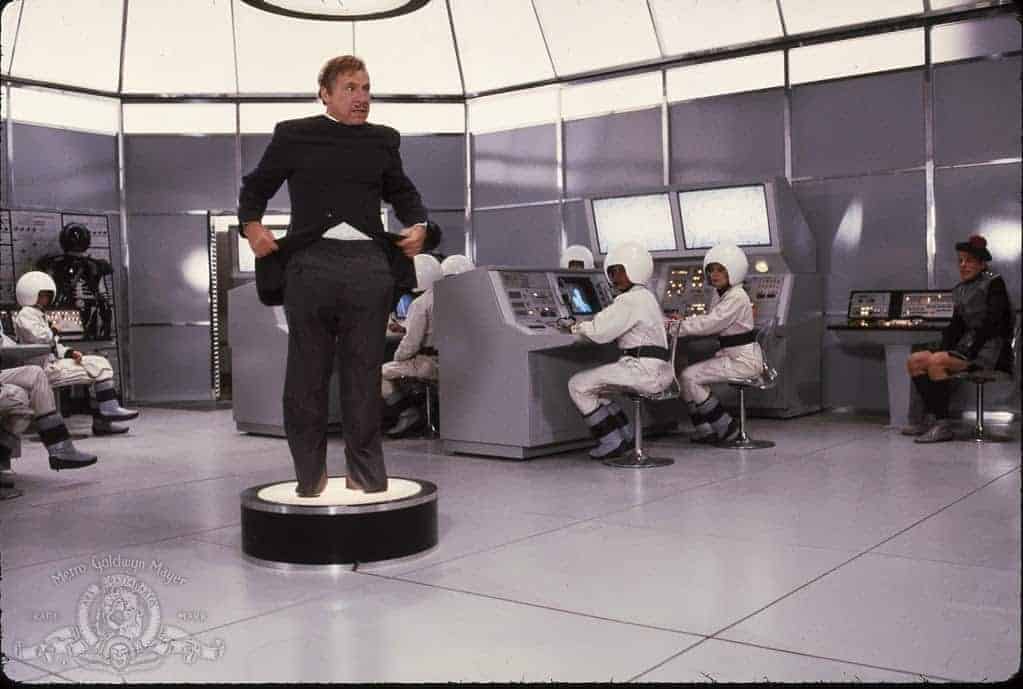
As we continue to relieve unwanted tension in the system, we want to develop stability and control in positions that bias the usage of the posterior chain – squatting, deadlifting, pushing a piece of furniture across the living room, single leg work, lunging, kettlebell swings. The 27 Hinges is a way to get acclimated to a variety of different positions to challenge the system.
27 HINGES
CREATE A MOVEMENT-RICH ENVIRONMENT
Not surprisingly some of the main causes of sciatica, according to the Mayo Clinic, are sedentary behavior and those with occupations that require or include extended periods of time sitting. So we need to change our behaviors when we have the chance. Get up, stand up, spend less time sitting (unless this is on the floor) and move.
We’re not asking you to stand all day if you have a desk job, just do less of it. Instead of sitting down during a meeting, schedule a walking meeting. In a TED TALK, Nilofer Merchant espouses over the impact that walking meetings have on her health and productivity.
Stand Up Kids also has a ton of other great info about why we need to look at promoting a more upright and movement biased environment. It’s also been documented that Steve Jobs and Mark Zuckerberg favored walking meetings because it sparked creativity. Not only does movement do a body good, but movement is also good for the brain. The point I’m trying to make is, create new opportunities, to move outside of the gym.
DEEPEN YOUR RELATIONSHIP WITH FLEXION
I’ll just say it. There’s a lot of fear-mongering around spinal flexion. It’s a position that’s been bastardized, ostracized, criticized but not often enough … exercised. Throughout this entire article, I’ve purposely avoided using or blaming this 4 letter word for the cause of sciatica – DISC. Why? Because there is a growing understanding that spinal degenerative changes don’t correlate with or cause low back pain.
For the purpose of staying on topic, deepening your relationship with spinal flexion will not only keep the nervous system in check. It simply nourishes and balances the spines (disc and other supporting structures) ability to understand and handle loads. Exercises, like the Jefferson Curl or exercises that bring you into a similar shape, are crucial to develop resilience and staying power.
CONCLUSION
The first step, to successfully resolve sciatica or any nagging injury, is to make the decision to get better.
“You are not broken.”
-Me
If you take these steps to implement these strategies outlined into your daily, I’m pretty confident that you’ll quickly have one less P.I.T.A. to deal with.
You got this.
~Kingsley



















TRS Virtual Mobility Coach
Guided mobilization videos customized for your body and lifestyle.
FREE 7-Day Trial